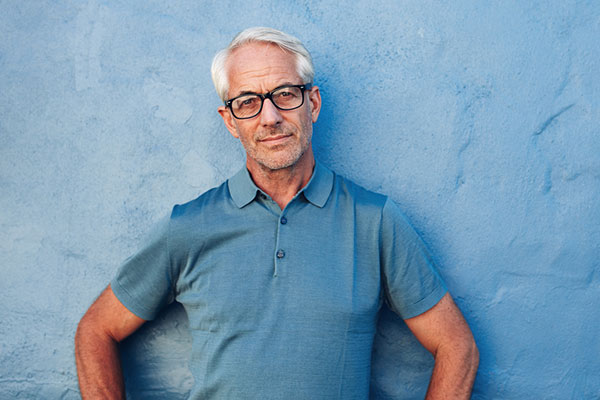Funds and trusts yielding above 5%: opportunity or value trap?
We run through options for income seekers seeking a high starting yield.
25th February 2021 11:42
by Cherry Reynard from interactive investor
We run through options for income seekers who would like a high starting yield.

The year 2020 may have been a dismal one for income seekers, but the outlook for 2021 is brighter. There is now a wealth of funds and investment trusts showing yields of more than 5%. However, many investors saw their income slump during the crisis and are rightly cautious on whether these yields are sustainable or, perhaps, whether they come at the price of capital growth.
Given savings rates are at or near zero and using the tried-and-tested ‘too good to be true’ principle, a yield of 5% would suggest an investment that involved considerable risk. But, these are not normal times. The pandemic has seen investors act in unusual ways and, in many cases, the funds with these high yields are not bad or unduly risky but have been a victim of a perfect storm of difficult circumstances.
The fund sectors with the highest yields
The majority of these high yields are to be found among UK equity income funds and in other unfashionable markets such as Europe, Latin America or frontier markets. These markets have all had specific characteristics: a focus on stodgy industries such as oil or tobacco; only a small weighting in popular growth areas such as technology and, above all, pretty awful performance during the pandemic. This is due to investors only being interested in Covid ‘winners’ – think cloud computing, digitalisation, e-commerce – and not in its ‘losers’ – energy, mining, banks.
James Calder, head of research at City Asset Management, says: “Where the pandemic caused the market to collapse, falling prices have meant a rising yield.”
However, it is worth noting that there are many well-regarded funds among this group of higher-yielding funds: JOHCM UK Equity Income, Fidelity MoneyBuilder Dividend, Premier Miton Income and Royal London Sterling Extra Yield Bond are all yielding in excess of 5%. Another example is the value-focused Man GLG Income, which has a yield of 5.5%.
Among investment trusts, there is City of London (LSE:CTY), with its 54-year record of dividend growth, or Lowland (LSE:LWI), managed by veteran investor James Henderson. Its yield is currently 5.3%.
Both Man GLG Income and City of London are members of interactive investor’s Super 60 list.
- Funds Fan: Man GLG Income interview, dividends outlook, and China
- Scottish Mortgage’s strong performance weighs on City of London
The question for investors is whether these now look like a good way to lock in a high yield and to invest with a quality manager, or whether the yields and capital growth still look dicey.
Certainly, the vaccine announcement appears to have brought a change in fortunes for many of these funds, with the Investment Association’s UK Equity Income sector rising by 14.1% over the past six months (according to FE Analytics, to 24 February). Some investors have bought into the potential for economic recovery and the relief rally following the Brexit deal.
- Are these the best and worst UK equity income funds?
- Best and worst fund sectors a year on from the Covid-19 sell-off
- Why our income portfolios are lagging our three growth models
Are dividends secure from here? Investors are right to feel fragile. Last year was among the worst seen for dividend announcements, with around 40% of companies cutting or abandoning their dividend. More recently, there has been better news with many companies resuming payouts now that the outlook is clearer. In December, banks were given the green light to pay dividends once again, important for the UK market where they are dominant.
However, Stephen Crewe, a director at FulcrumAsset Management says investors still need to exercise caution: “Banks have been forced not to pay dividends and these will come back. However, in other sectors, the cuts will be permanent. There is no reason to think that Royal Dutch Shell (LSE:RDSB) and BP (LSE:BP.) will return to their previous levels of dividend payments. On average, it takes dividends four or five years to recover from this type of setback and it needs organic growth.” That is bad news for other sectors in structural decline – such as high street retail.

Some high-yielding shares on wrong side of ESG trade
Perhaps just as important for many equity income funds is the clash between income and sustainability. During the pandemic, many investors have become increasingly aware of the power of their wealth to do good. They may want income, but not if it comes from a mucky old tobacco company or a fossil fuel producer.
Many of the highest-yielding companies are high yield because they are on the wrong side of the ESG trade. Calder says: “Many of these markets are just not as ESG-friendly. They are dominated by old-fashioned dig-it-out-of-the-ground-and-burn-it industries. That’s not appealing to anyone under 40.”
Investors also need to consider the potential for capital growth. The income may be sustainable, but that is little use if investors then lose out on capital. Investors need to ensure that their portfolio isn’t dominated by old economy stocks with little growth potential at a time when the world is undergoing a digital revolution.
There are two options: the first is to pick fund managers who can be relied on to navigate these headwinds for income investing. Calder says the quality fund managers in this mix won’t be picking companies with structural challenges, ESG problems or a defunct business model. The alternative is to hunt among funds with a marginally lower yield, but higher growth potential. Murray International (LSE:MYI), at 4.9% or Jupiter Emerging & Frontier Income (LSE:JEFI), at 4.3%, for example.
Income alternatives with high yields
If equity income funds offer an imperfect solution, looking more closely at the investment trust sector brings in non-equity options and Calder believes these tend to offer more secure yields. He points to trusts focused on, say, infrastructure, where yields are index-linked and asset-backed – not the case for equity income funds.
In the 5% plus bracket are renewables trusts such as Greencoat UK Wind (LSE:UKW), which is both ESG-friendly and high yielding. It also brings in more unusual property funds – Warehouse REIT (LSE:WHR) – for example, is geared to the growth in e-commerce and have had a strong year in 2020. It has a yield of 4.9%.
- All funds will be ESG in five years, professional investors predict
- Want to invest ethically? ii’s ACE 40 list of ethical investments can help
James Carthew, head of investment company research at QuotedData, sees a bright future for many of these trusts: “The warehouse REITs are supported by the underlying demand for logistics, while renewables trusts have long-term contracts, giving them predictable cash flows. There is no suggestion that any of them couldn’t pay their dividends.” He says that the renewable energy trusts now have a tailwind from President Joe Biden’s plans for a green revolution in the US. Heightened demand for this type of asset should support the net asset value of the trusts as well.
A recent infrastructure addition to interactive investor’s Super 60 list is Legg Mason IF ClearBridge Global Infrastructure Income, which has a dividend yield of over 5%.
Funds and trusts with yields above 5%
Table shows funds and trusts mentioned in the article that have yields of 5% or higher. Source for fund yields is FE Analytics, source for trust yields is The Association of Investment Companies.
Niche investment trusts with high yields
Property is a mixed picture. Some speciality property, such as Civitas Social Housing (LSE:CSH) and the Impact Healthcare REIT (LSE:IHR)and Target Healthcare REIT (LSE:THRL) are sitting on high yields. Carthew believes these should be steady options. However, it is difficult to make a strong case for the more traditional commercial property trusts with such uncertainty surrounding office and retail properties. “For the most part, I don’t think they’ll cut their income, but they are a gamble on whether things will go back to normal,” he says.
There are some debt funds on attractive yields though here, says Carthew, investors need to be careful: “There are some good trusts and some awful trusts even if, on the whole, the ones that have gone wrong have already gone wrong.” He believes that for some of the direct lending trusts the dividend may be secure but the capital could prove volatile. He prefers the Henderson Diversified Income Trust (LSE: HDIV). It pays just under 5% but is run very conservatively by the fund managers John Pattullo and Jenna Barnard.

Funds that artificially boost income
It is also worth mentioning that some funds and trusts (such as Schroder Income Maximiser, which yields 6.7%) use derivatives and other financial instruments to boost the yield. Crewe says there is a danger that option-writing strategies can suppress capital growth at a time when it has been important to remain fully invested to ride out market volatility.
Some trusts, notably Shires Income (LSE:SHRS), will use low-cost gearing to buy preference shares to boost the yield. The BlackRock World Mining Trust (LSE:BRWM), which has a yield of 3.7%, uses debentures to add to its overall income. This can be a way to retain more investment flexibility, while also keeping the yield high.
There are options for income seekers in the year ahead. However, they need to ensure they aren’t drawn down a narrow ‘value’ path that sees them compromise long-term capital growth. It is possible to find both equity funds and trusts investing in alternatives that offer the best of both worlds – a secure income and the potential to grow capital over time.
These articles are provided for information purposes only. Occasionally, an opinion about whether to buy or sell a specific investment may be provided by third parties. The content is not intended to be a personal recommendation to buy or sell any financial instrument or product, or to adopt any investment strategy as it is not provided based on an assessment of your investing knowledge and experience, your financial situation or your investment objectives. The value of your investments, and the income derived from them, may go down as well as up. You may not get back all the money that you invest. The investments referred to in this article may not be suitable for all investors, and if in doubt, an investor should seek advice from a qualified investment adviser.
Full performance can be found on the company or index summary page on the interactive investor website. Simply click on the company's or index name highlighted in the article.